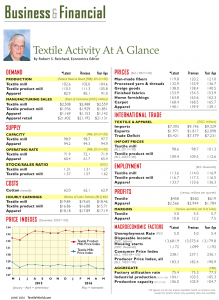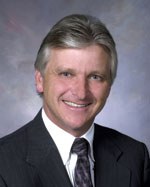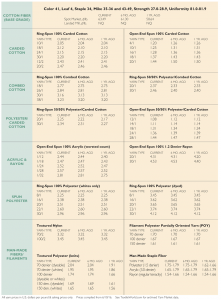FREMONT, Ind. ― June 12, 2016 — Carver Non-Woven Technologies LLC, a wholly owned subsidiary of custom compression molder and compounder, R3 Composites Inc., will begin a rolling startup at its new manufacturing facility here on July 1, 2016, and by July 15, 2016, will be in full commercial production of high-quality, single- and multi-material nonwoven products for both R3 and the broader North American composites industry. The new plant is situated on an 18-acre/7.3-hectare site in a building that is 165,000-square-feet/15,329-square-meters in size, providing plenty of room to expand should demand for the new products grow.
Carver is unique in how it approaches many aspects of the design and production of nonwovens. First, unusual for the nonwovens industry, the company’s complete production line is fully automated ― from initial debaling, fiber opening, blending, and carding, all the way through to finished packaging. As a result, Carver is able to produce nonwovens with low-variance weight — density — as well as superior dimensional stability and mechanical properties. This leads to nonwovens that are more consistent and mechanically more efficient meaning a lower density nonwoven can be used in a given composite part without sacrificing tolerances or mass. This, in turn, can have the follow-on benefits of reducing both cost and mass of finished applications in either thermoset or thermoplastic composites. Furthermore, Carver uses up to three different opening processes during initial fiber handling, which leads to better, more open fibers and more consistent fiber length owing to less fiber damage, as well as a more homogeneous fiber architecture in the finished composite part.
The Carver team also is unique in terms of the broad range of fiber types it works with, including E-glass fiber, bast natural fiber including tossa jute and others, carbon fiber, basalt fiber, and thermoplastic fiber including virgin and 100-percent recycled polyethylene terephthalate (PET), polyamide, polypropylene (PP), polylactic acid (PLA), as well as high-density and low-density polyethylene (HDPE and LDPE). Carver also is one of the first to offer carbon fiber needled nonwovens in a multitude of blends at considerably lower costs than with conventional wrap-and-resonate processes. During nonwovens production, the fleece mats are typically coated with thermoset binder resins, including an acrylic/latex binder, which itself confers unique properties including specific colorants when the mats are subsequently impregnated with thermoset resins prior to forming. Carver’s dual-web configuration enables the company to formulate products using different binder types, including the novel option to combine two different resin formulations in a single-fiber architecture.
High levels of flexibility have been designed into the new facility in order to allow the Carver team to be able to respond to customer needs by offering products with areal weights ranging from 300 to 2,400 grams/square-meter (gsm) using numerous fiber types, blends, and layering. In fact, Carver is able to achieve blend ratios from 80/20 to 20/80 for natural fibers and other fibers such as fiberglass, polymeric fibers, or even carbon fiber. Typically, natural fiber blend ratios above 70 percent for non-crimp fibers are unusual, but Carver can currently achieve up to 80 percent thanks to the quality program with which the team selects its natural fibers and the care with which the fibers are subsequently handled, which preserves fiber length and minimizes damage both to the fibers and to the card itself.
The diversity of available fiber types helps Carver offer both single- as well as multi-fiber and layered (hybrid) mats thanks to the company’s specially designed production line. That system is capable of simultaneously running up to six different fiber types, all of which can be commingled either in a single layer, or in a structure featuring up to three different fiber types each on top and bottom sides of the nonwoven mat. For greater design flexibility, these hybrid fiber combinations may be the same or different areal weight depending on customer requirements. This also allows for fiber architectures that mix non-melting and melting fibers where the latter become the final part’s resin matrix after preheating just prior to forming in a cold tool. An application in which hybrid mats are increasingly used is automotive underbody shields where high-impact polymeric fibers are used on the road-facing side and a hybrid mixture of more structural and acoustical fibers including glass, carbon, basalt, polyester, and/or natural fibers are used on the vehicle-facing side of the nonwoven architecture.
Carver’s know-how with respect to commingling and homogenization of hybrid mat technologies led to collaboration with equipment suppliers to customize many piece of equipment being used at the new plant. The new production facility features state-of-the-art technologies, including the latest developments in fiber opening, blending, carding, cross-lapping, and web drafting, web scanning, and needling. For example, Hyperpunch needle loom technology (developed by Dilo Group, Eberbach, Germany) brings a multitude of benefits. Thanks both to the elliptical needle beam movement of the technology as well as sequential movement of the needles, Hyperpunch technology eliminates drag on the fleece in the machine direction during its dwell time in the needles, which in turn can lead to pulling and shrinkage of the fleece in the cross-machine direction, causing unevenness and dimensional changes to the batt. The technology also allows for faster needling (both fine and finish) and higher throughput, hence more economical production of needled fine fleeces. Still other benefits include better fiber entanglement, a more even felt surface with smaller needle holes, significantly lower needle wear and negligible needle breakage (which can contribute to consistency issues with respect to fiber length and outgasing), better retention of the web’s strength, and less damage to the carrier fabric. The Carver team believes it is the first nonwovens manufacturer to apply Hyperpunch technology to the production of natural fiber nonwovens and credits it to helping the company’s natural fiber nonwovens achieve 90+ values in automotive fogging tests for interior components. (In conventional needling operations, the natural fibers can become damaged as well as heated via friction during needling operations and that releases fatty acids, which contribute to poor fogging values.)
Yet another unique aspect is that the Carver team negotiated supply agreements (covering fiber specifications and quality as well as purchase price) with its entire supply chain for all fiber types, but especially with suppliers of bast (natural) fibers in Southeast Asia. In fact, this exclusive supply-chain management program for bast non-wovens features full quality testing of fibers ― including on-site inspection and analysis at farms throughout India and Bangladesh ―by Carver personnel as well as third party testing by University of Calcutta prior to shipment to Carver’s facility in the U.S. Controlling fiber quality at the source ensures Carver receives the best products pre-certified by local institutions prior to shipping, and that, in turn, helps the company maintain very-consistent, high-quality products for its customers, further enhancing lightweighting opportunities.
To ensure the safety and comfort for its workers and maintain a clean, dust-free working environment, the company’s air-management system uses dual, triple air scrubbing with dust discharge into an exterior receiving hopper. The system does double duty in cold winter months by heating and humidifying plant air, and by cooling it in hot summer months. In total, the powerful air-management system at Carver’s plant moves and cleans 82,400 cubic feet/2,333 cubic meters of air per minute during line operations. Not surprisingly, the new plant was built to be ISO compliant (to specifications set by the International Organization for Standardization) and already has achieved an IP65 rating from the International Protection Marketing organization. Other production capabilities currently featured in the new plant include:
- Option of six different fiber types in blend including splitting one to three different fiber types in a layered structure;
- Two binder resin technologies, including thermal melt and formaldehyde-free thermosetting acrylic/latex (the latter with multiple color options);
- Fully integrated and continuous liquid resin application line;
- Randomizing control over fiber direction in both machine direction and across-machine direction (MD and AMD);
- Continuous inline web scanning and auto web weight control to maintain tight web tolerance;
- Non-fogging Hyperpunch as well as standard needling with needle-punch densities ranging from 3.1 to 62 square inches/20 to 400 square centimeters via quad wide-board technology;
- Post-trim finish widths up to 12 feet/3.5 meters;
Roll-good widths ranging from 2.3 to 11.5 feet/0.7 to 3.5 meters and roll diameters up to 5.02 feet/1.53 meters, each wrapped in protective plastic and labeled inline;
- Pre-cut sheets in widths ranging from 1.6 to 11.5 feet/0.5 to 3.5 meters and lengths up to 10 feet/3.05 meters packaged on pallets and labeled inline;
Full-function laboratory testing to ASTM International and SAE International® standards (including U.S. Federal Motor Vehicle Safety Standard (FMVSS) 302 testing and benchmark UL® 94 burn testing; and
- Onsite compression molding capabilities for customer trials with current press sizes ranging from 75 to 4,400 tons/tonnes;
A 60-inch/152-centimeter wide film lamination line with latest in air knife and hot-roll heating technologies.”We’re very proud of the amount of flexibility, new technology, and custom-modified equipment this new facility represents,” notes Mark Glidden, president, R3 Composites and Carver Non-Woven. “To achieve this level of competence right from the start, our organization has made a substantial $13-million dollar [USD] investment. If our products really take off the way we believe they will, then our five-year plan calls for us to make an additional $20-million dollar investment to expand our operations. Others may say that sounds overly confident, but I can share that for the first time in 35 years of doing business, our company has a letter of intention from an automotive OEM stating that as soon as we’re operational, this company will buy three-million square-meters of product per year from us. We have similar letters of intent from tier suppliers for the RV [recreational vehicle] industry. We are well on our way to filling our capacity for the first phase of our line, and we’ve just opened the doors.”
Posted June 13, 2016
Source: R3 Composites







